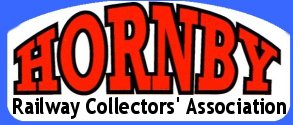Hornby Range
A short history of Hornby Trains
After the Great War (1918), German toys were out of favour. To fill the gap in the toy train market, Frank Hornby the maker of Meccano, started to produce 0 Gauge tinplate trains under his own name in 1920. At first these were clockwork only, and were fastened together with Meccano-style nuts and bolts, but tabbed construction soon became universal. Electric propulsion became available from the early 1920s, while the range expanded to cover the four main-line groups as well as special export versions, with a few items appearing in colours never seen in real life! The zenith was reached in the 1930s, with some items nearing to scale, and the smaller 'M' line offering great play value. Great emphasis was placed on the quality of materials, paint and finish.
In 1938 the smaller scale Hornby Dublo was introduced in both clockwork and the now universal 12 volts DC electric. Hornby Dublo featured diecast locomotive chassis and bodies, with the coaches and wagons having tinplate bodies. After the Second World War, Hornby Dublo became the dominant range, available in electric only, with 0 Gauge clockwork now being aimed more at younger children. Pre-war wooden buildings were replaced with more durable aluminium ones, and the range was rapidly expended. In 1958 plastic rolling stock in the Super-Detail was introduced, followed by a change to 2-rail operation. Production of all Hornby lines in England ceased in 1964, although some of the Hornby Dublo items were subsequently sold under the Wrenn and Tri-ang brand names.
Hornby Range Information Page
This page (and the sub-pages within) contain information on the Hornby products which the HRCA is primarily concerned with: Hornby 'O' Gauge and Dublo. Click the relevant picture below for more information.
|
|
|


